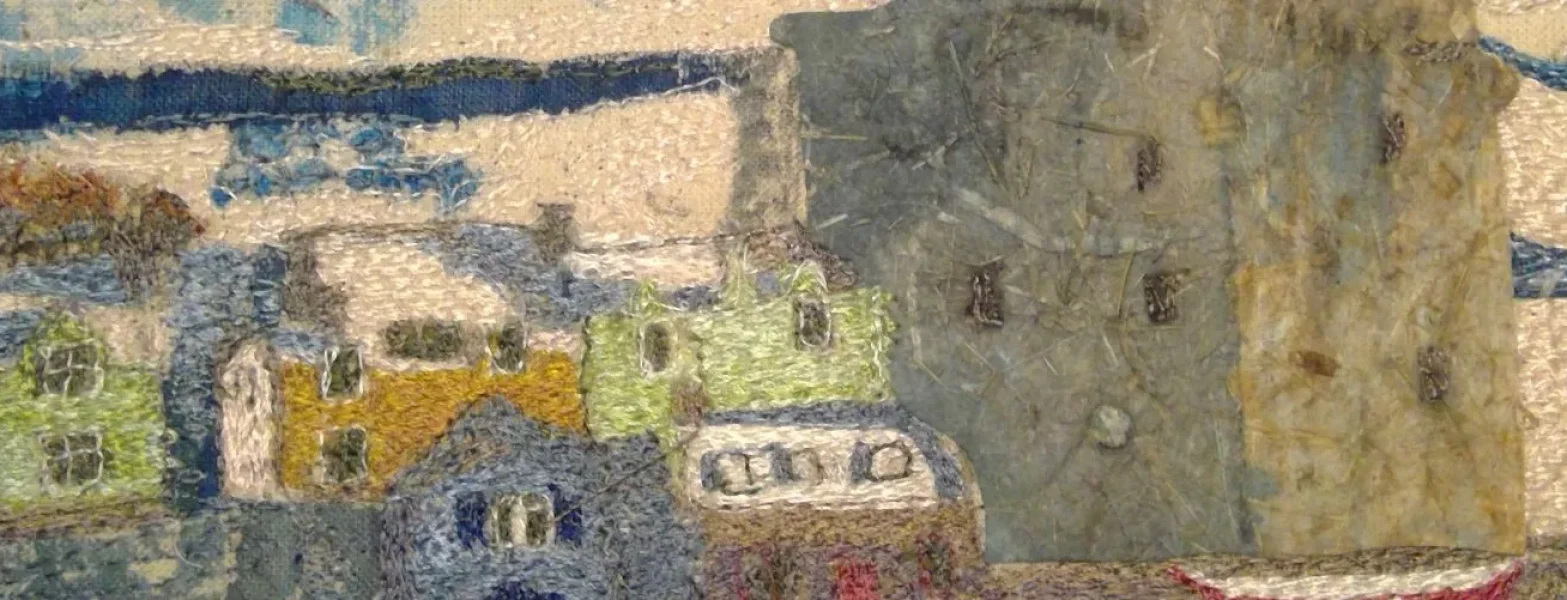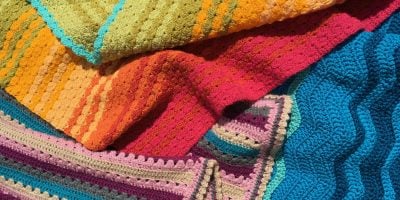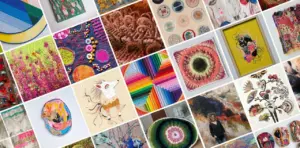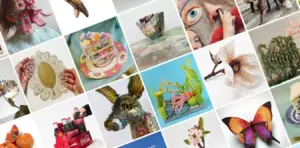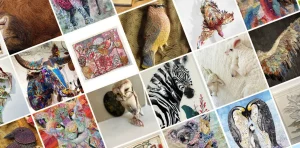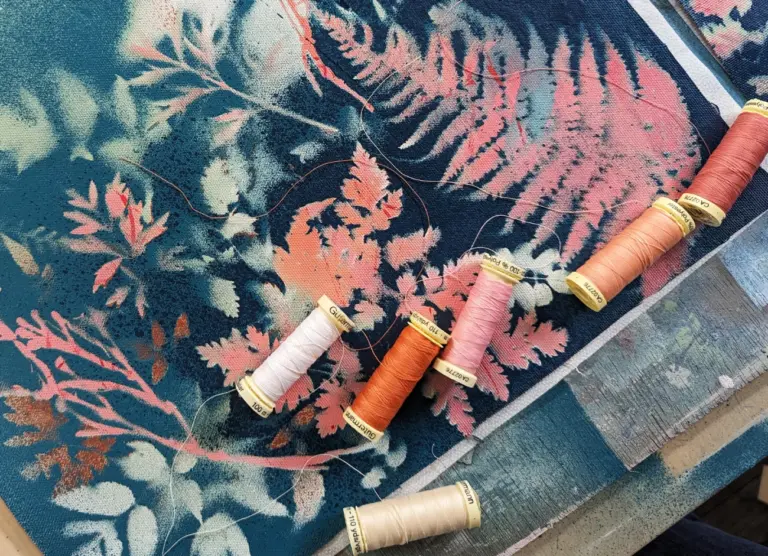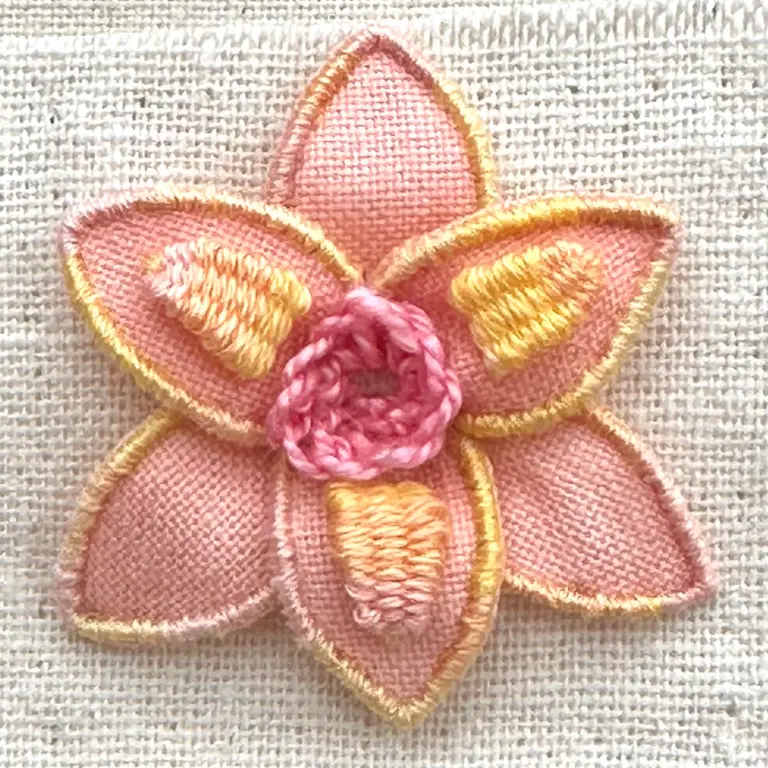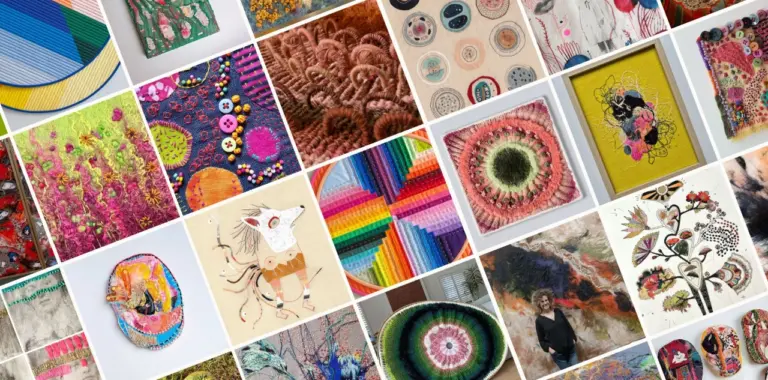Having completed our Machine Embroidery Skill Stage 3 course, Josephine Robinson shares her experience of studying with us. Having always been a keen sewer, Josephine wanted to expand her skills and found that an accredited course would validate her skills and give her a much needed confidence boost. This is her #MyStitchJourney.

“The most helpful thing I’ve learnt as a result of the course is the design process: How to use a source of inspiration and develop it into a design.”
Josephine Robinson
I enrolled on the Skill Stage 3 Machine Embroidery course in October 2020 when it became clear that some form of lock down was going to continue. I wasn’t expecting to be successful in enrolling as I thought the demand might be quite high, so I was delighted to receive the confirmation email.
I’ve sewn for as long as I can remember! My Guyanese grandmother was a seamstress and I can barely remember being without a needle of some kind in my hand. I’ve always made curtains, cushions, quilts and clothes, as well enjoying other textile related crafts such as felt making and knitting. Many years ago I did a couple of short courses on Machine Embroidery and had always liked the idea of expanding my skills. I did look at the other courses as well, and was tempted by hand embroidery and felt making, but the images of past student’s work in the machine embroidery field were what tipped the balance.
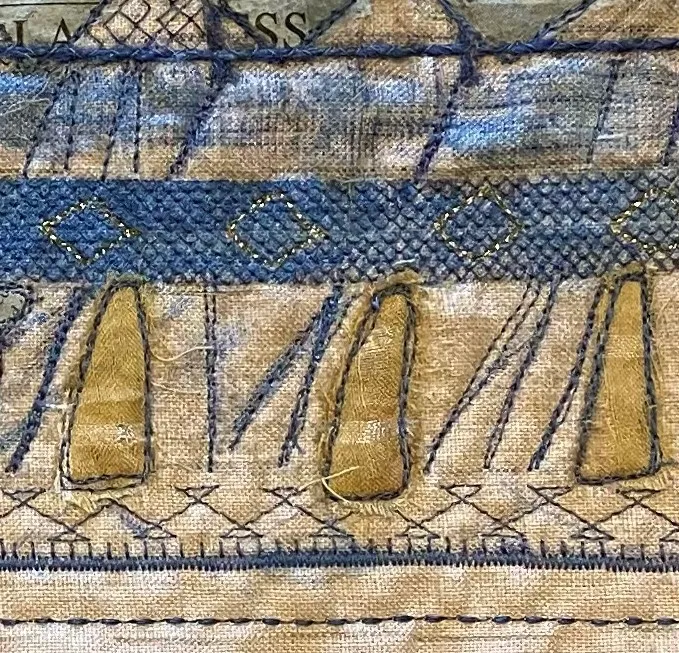
Motivation
I had looked at both residential or day courses run elsewhere in the UK, but I knew I enjoyed distance learning, having undertaken an Open University Masters for my current career, and felt that this course would enable me to learn and experiment using my own resources and environment. I have a very busy job, but found I was able to fit this course around my work. Because there are elements of written work, I could continue some aspects of study when I was away from home (and my precious sewing machine!)
I opted for an accredited course because although I have received positive feedback for things I have created in the past, I felt I needed some formal validation in order to boost my confidence. The School of Stitched Textiles website was particularly inviting. It was good to be able to look through the prospectus at my leisure. I had also tried a couple of shorter on-line courses but felt that they started well but didn’t progress very far, or didn’t involve any feedback, so you couldn’t tell how well you had done. The School of Stitched Textiles courses seemed to enable you to progress through a process from beginning to end.


What have you learnt?
The most helpful thing I’ve learnt as a result of the course is the design process: How to use a source of inspiration and develop it into a design. It taught me how to incorporate this into a completed item, taking into account feedback along the way. I’ve also really enjoyed designing in different mediums including on the computer as well as the discipline of recording and presenting your progress from start to finish.
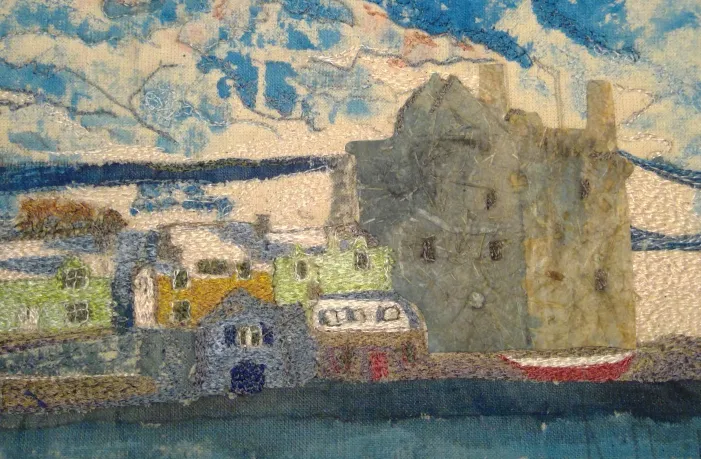
What’s Next?
I have now enrolled on the Skill Stage 4 Machine Embroidery course, and if anything, I’m enjoying it even more! If I manage to get through this course then I have my eye on the Embroidery Masters course. At the same time, I have people asking me for copies of items I have already made, so I will have to see if that side of things takes off first!
I would thoroughly recommend the course to others – if not machine embroidery courses, then the other courses such as patchwork, hand embroidery, felt making or general textiles. I feel as though it has expanded my horizons – every time I reached the end of a module, I was desperate to get started on the next.
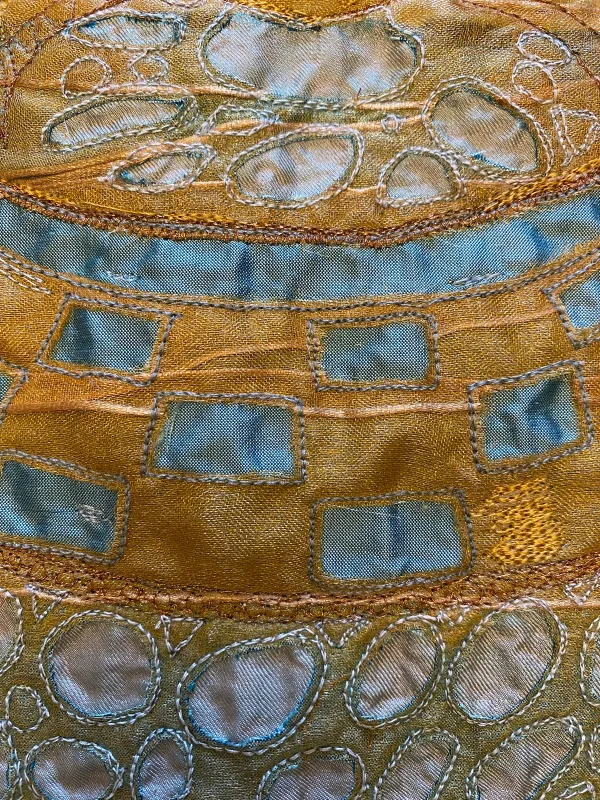
Advice for new students?
My advice to new students would be to read each module guide carefully. Try to ensure you answer what has been asked of you. It is useful to plan your time and try to make sure you finish each module in 6-8 weeks so that you aren’t having to rush. Uploading images of your progress to your portfolio as you go along is easier than trying to do all the written work at the end of a module. I also found it saved time to adopt a style for your portfolio early in your study and stick to it. This will save a huge amount of time when trying to redesign the layout each time.

